Building Vibration Measurement and Prediction during Train Operations
Abstract
1. Introduction
2. Field Measurement
2.1. Measurement Setup
2.2. Measurement Results
3. Vibration Prediction and Validation
3.1. Prediction Model
3.1.1. Soil–Structure Interaction Model
3.1.2. Building Model
3.1.3. System Assembly
3.2. Model Validation
3.2.1. Transmission Ratio from Soil to Structure
3.2.2. Building Vibration
4. Discussion
5. Conclusions
- (1)
- The predicted vibration is in good agreement with the measured vibration, and the established prediction model can reasonably predict the vibration of a building with a rigid foundation caused by train operation once the ground vibration can be obtained via measurement.
- (2)
- The coupling loss is obvious as the vibration propagates from the soil to the rigid foundation, and the vibration tends to decrease significantly with an increase in frequency.
- (3)
- For s rigid building foundation, the coupling effect of soil and structure causes a low-frequency building–soil resonance and a high-frequency amplitude attenuation. This effect becomes more pronounced with higher building heights, leading to a more significant change in high-frequency amplitude.
Author Contributions
Funding
Data Availability Statement
Acknowledgments
Conflicts of Interest
References
- Zou, C.; Wang, Y.; Moore, J.A.; Sanayei, M. Train-induced field vibration measurements of ground and over-track buildings. Sci. Total Environ. 2017, 575, 1339–1351. [Google Scholar] [CrossRef]
- Zou, C.; Wang, Y.; Wang, P.; Guo, J. Measurement of ground and nearby building vibration and noise induced by trains in a metro depot. Sci. Total Environ. 2015, 536, 761–773. [Google Scholar] [CrossRef]
- He, C.; Zhou, S.; Guo, P. Mitigation of Railway-Induced Vibrations by Using Periodic Wave Impeding Barriers. Appl. Math. Model. 2022, 105, 496–513. [Google Scholar] [CrossRef]
- Liu, Q.; Li, X.; Zhang, X.; Zhou, Y.; Chen, Y.F. Applying Constrained Layer Damping to Reduce Vibration and Noise from a Steel-Concrete Composite Bridge: An Experimental and Numerical Investigation. J. Sandw. Struct. Mater. 2020, 22, 1743–1769. [Google Scholar] [CrossRef]
- Li, X.; Chen, Y.; Zou, C.; Chen, Y. Train-Induced Vibration Mitigation Based on Foundation Improvement. J. Build. Eng. 2023, 76, 107106. [Google Scholar] [CrossRef]
- Liu, Q.; Thompson, D.J.; Xu, P.; Feng, Q.; Li, X. Investigation of Train-Induced Vibration and Noise from a Steel-Concrete Composite Railway Bridge Using a Hybrid Finite Element-Statistical Energy Analysis Method. J. Sound Vib. 2020, 471, 115197. [Google Scholar] [CrossRef]
- Liu, W.; Liang, R.; Zhang, H.; Wu, Z.; Jiang, B. Deep Learning Based Identification and Uncertainty Analysis of Metro Train Induced Ground-Borne Vibration. Mech. Syst. Signal Process. 2023, 189, 110062. [Google Scholar] [CrossRef]
- He, C.; Zhou, S.; Di, H.; Guo, P.; Xiao, J. Analytical Method for Calculation of Ground Vibration from a Tunnel Embedded in a Multi-Layered Half-Space. Comput. Geotech. 2018, 99, 149–164. [Google Scholar] [CrossRef]
- Colaço, A.; Barbosa, D.; Alves Costa, P. Hybrid Soil-Structure Interaction Approach for the Assessment of Vibrations in Buildings Due to Railway Traffic. Transp. Geotech. 2022, 32, 100691. [Google Scholar] [CrossRef]
- Zhou, S.; He, C.; Guo, P.; Yu, F. Dynamic Response of a Segmented Tunnel in Saturated Soil Using a 2.5-D FE-BE Methodology. Soil Dyn. Earthq. Eng. 2019, 120, 386–397. [Google Scholar] [CrossRef]
- Colaço, A.; Alves Costa, P.; Amado-Mendes, P.; Calçada, R. Vibrations Induced by Railway Traffic in Buildings: Experimental Validation of a Sub-Structuring Methodology Based on 2.5D FEM-MFS and 3D FEM. Eng. Struct. 2021, 240, 112381. [Google Scholar] [CrossRef]
- Kuo, K.A.; Papadopoulos, M.; Lombaert, G.; Degrande, G. The Coupling Loss of a Building Subject to Railway Induced Vibrations: Numerical Modelling and Experimental Measurements. J. Sound Vib. 2019, 442, 459–481. [Google Scholar] [CrossRef]
- François, S.; Pyl, L.; Masoumi, H.R.; Degrande, G. The Influence of Dynamic Soil–Structure Interaction on Traffic Induced Vibrations in Buildings. Soil Dyn. Earthq. Eng. 2007, 27, 655–674. [Google Scholar] [CrossRef]
- Coulier, P.; Lombaert, G.; Degrande, G. The Influence of Source–Receiver Interaction on the Numerical Prediction of Railway Induced Vibrations. J. Sound Vib. 2014, 333, 2520–2538. [Google Scholar] [CrossRef]
- Auersch, L. Response to Harmonic Wave Excitation of Finite or Infinite Elastic Plates on a Homogeneous or Layered Half-Space. Comput. Geotech. 2013, 51, 50–59. [Google Scholar] [CrossRef]
- Auersch, L. Dynamic Behavior of Slab Tracks on Homogeneous and Layered Soils and the Reduction of Ground Vibration by Floating Slab Tracks. J. Eng. Mech. 2012, 138, 923–933. [Google Scholar] [CrossRef]
- Auersch, L. Wave Propagation in the Elastic Half-Space Due to an Interior Load and Its Application to Ground Vibration Problems and Buildings on Pile Foundations. Soil Dyn. Earthq. Eng. 2010, 30, 925–936. [Google Scholar] [CrossRef]
- Clot, A.; Arcos, R.; Romeu, J. Efficient three-dimensional building-soil model for the prediction of ground-borne vibrations in buildings. J. Struct Eng. 2017, 143, 04017098. [Google Scholar] [CrossRef]
- Fiala, P.; Degrande, G.; Augusztinovicz, F. Numerical Modelling of Ground-Borne Noise and Vibration in Buildings Due to Surface Rail Traffic. J. Sound Vib. 2007, 301, 718–738. [Google Scholar] [CrossRef]
- Lopes, P.; Alves Costa, P.; Calçada, R.; Silva Cardoso, A. Influence of Soil Stiffness on Building Vibrations Due to Railway Traffic in Tunnels: Numerical Study. Comput. Geotech. 2014, 61, 277–291. [Google Scholar] [CrossRef]
- Papadopoulos, M.; François, S.; Degrande, G.; Lombaert, G. The Influence of Uncertain Local Subsoil Conditions on the Response of Buildings to Ground Vibration. J. Sound Vib. 2018, 418, 200–220. [Google Scholar] [CrossRef]
- Edirisinghe, T.L.; Talbot, J.P. The Significance of Source-Receiver Interaction in the Response of Piled Foundations to Ground-Borne Vibration from Underground Railways. J. Sound Vib. 2021, 506, 116178. [Google Scholar] [CrossRef]
- Galvín, P.; Mendoza, D.L.; Connolly, D.P.; Degrande, G.; Lombaert, G.; Romero, A. Scoping Assessment of Free-Field Vibrations Due to Railway Traffic. Soil Dyn. Earthq. Eng. 2018, 114, 598–614. [Google Scholar] [CrossRef]
- López-Mendoza, D.; Romero, A.; Connolly, D.P.; Galvín, P. Scoping Assessment of Building Vibration Induced by Railway Traffic. Soil Dyn. Earthq. Eng. 2017, 93, 147–161. [Google Scholar] [CrossRef]
- Connolly, D.P.; Alves Costa, P.; Kouroussis, G.; Galvin, P.; Woodward, P.K.; Laghrouche, O. Large Scale International Testing of Railway Ground Vibrations across Europe. Soil Dyn. Earthq. Eng. 2015, 71, 1–12. [Google Scholar] [CrossRef]
- He, C.; Zhou, S.; Guo, P.; Di, H.; Zhang, X. Modelling of Ground Vibration from Tunnels in a Poroelastic Half-Space Using a 2.5-D FE-BE Formulation. Tunn. Undergr. Space Technol. 2018, 82, 211–221. [Google Scholar] [CrossRef]
- Zhou, S.; He, C.; Di, H.; Guo, P.; Zhang, X. An Efficient Method for Predicting Train-Induced Vibrations from a Tunnel in a Poroelastic Half-Space. Eng. Anal. Bound. Elem. 2017, 85, 43–56. [Google Scholar] [CrossRef]
- Ma, M.; Liu, W.; Qian, C.; Deng, G.; Li, Y. Study of the Train-Induced Vibration Impact on a Historic Bell Tower above Two Spatially Overlapping Metro Lines. Soil Dyn. Earthq. Eng. 2016, 81, 58–74. [Google Scholar] [CrossRef]
- Galvín, P.; Domínguez, J. Experimental and Numerical Analyses of Vibrations Induced by High-Speed Trains on the Córdoba–Málaga Line. Soil Dyn. Earthq. Eng. 2009, 29, 641–657. [Google Scholar] [CrossRef]
- Liang, X.; Yang, Y.B.; Ge, P.; Hung, H.-H.; Wu, Y. On Computation of Soil Vibrations Due to Moving Train Loads by 2.5D Approach. Soil Dyn. Earthq. Eng. 2017, 101, 204–208. [Google Scholar] [CrossRef]
- Cheng, G.; Feng, Q.; Sheng, X.; Lu, P.; Zhang, S. Using the 2.5D FE and Transfer Matrix Methods to Study Ground Vibration Generated by Two Identical Trains Passing Each Other. Soil Dyn. Earthq. Eng. 2018, 114, 495–504. [Google Scholar] [CrossRef]
- Verbraken, H.; Lombaert, G.; Degrande, G. Verification of an Empirical Prediction Method for Railway Induced Vibrations by Means of Numerical Simulations. J. Sound Vib. 2011, 330, 1692–1703. [Google Scholar] [CrossRef]
- Yang, J.; Zhu, S.; Zhai, W.; Kouroussis, G.; Wang, Y.; Wang, K.; Lan, K.; Xu, F. Prediction and Mitigation of Train-Induced Vibrations of Large-Scale Building Constructed on Subway Tunnel. Sci. Total Environ. 2019, 668, 485–499. [Google Scholar] [CrossRef]
- Lopes, P.; Ruiz, J.F.; Alves Costa, P.; Medina Rodríguez, L.; Cardoso, A.S. Vibrations inside Buildings Due to Subway Railway Traffic. Experimental Validation of a Comprehensive Prediction Model. Sci. Total Environ. 2016, 568, 1333–1343. [Google Scholar] [CrossRef]
- Guo, T.; Cao, Z.; Zhang, Z.; Li, A. Numerical Simulation of Floor Vibrations of a Metro Depot under Moving Subway Trains. J. Vib. Control 2018, 24, 4353–4366. [Google Scholar] [CrossRef]
- Sanayei, M.; Zhao, N.; Maurya, P.; Moore, J.A.; Zapfe, J.A.; Hines, E.M. Prediction and Mitigation of Building Floor Vibrations Using a Blocking Floor. J. Struct. Eng. 2012, 138, 1181–1192. [Google Scholar] [CrossRef]
- Sanayei, M.; Kayiparambil, P.A.; Moore, J.A.; Brett, C.R. Measurement and Prediction of Train-Induced Vibrations in a Full-Scale Building. Eng. Struct. 2014, 77, 119–128. [Google Scholar] [CrossRef]
- Zou, C.; Moore, J.A.; Sanayei, M.; Wang, Y. Impedance Model for Estimating Train-Induced Building Vibrations. Eng. Struct. 2018, 172, 739–750. [Google Scholar] [CrossRef]
- Zou, C.; Moore, J.A.; Sanayei, M.; Wang, Y.; Tao, Z. Efficient Impedance Model for the Estimation of Train-Induced Vibrations in over-Track Buildings. J. Vib. Control 2021, 27, 924–942. [Google Scholar] [CrossRef]
- Zou, C.; Moore, J.A.; Sanayei, M.; Tao, Z.; Wang, Y. Impedance Model of Train-Induced Vibration Transmission Across a Transfer Structure into an Overtrack Building in a Metro Depot. J. Struct. Eng. 2022, 148, 04022187. [Google Scholar] [CrossRef]
- Auersch, L. Building Response Due to Ground Vibration - Simple Prediction Model Based on Experience with Detailed Models and Measurements. Int. J. Acoust. Vib. 2010, 15, 101. [Google Scholar] [CrossRef]
- Tao, Z.-Y.; Zou, C.; Yang, G.-R.; Wang, Y.-M. A semi-analytical method for predicting train-induced vibrations considering train-track-soil and soil-pile-building dynamic interactions. Soil Dyn. Earthq. Eng. 2023, 167, 107822. [Google Scholar] [CrossRef]
- Li, X.; Chen, Y.; Zou, C.; Wu, J.; Shen, Z.; Chen, Y. Building coupling loss measurement and prediction due to train-induced vertical vibrations. Soil Dyn. Earthq. Eng. 2023, 167, 107644. [Google Scholar] [CrossRef]

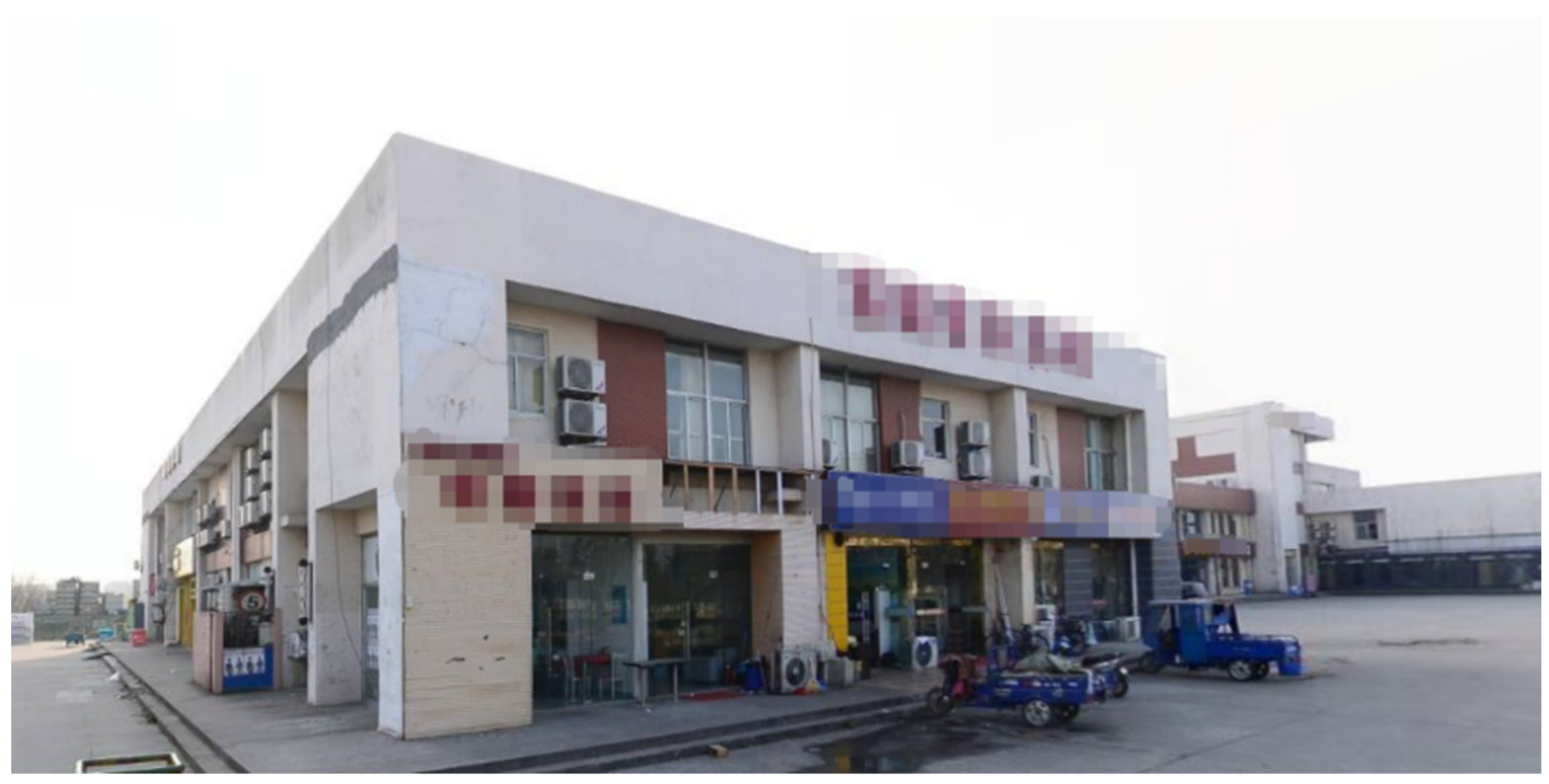
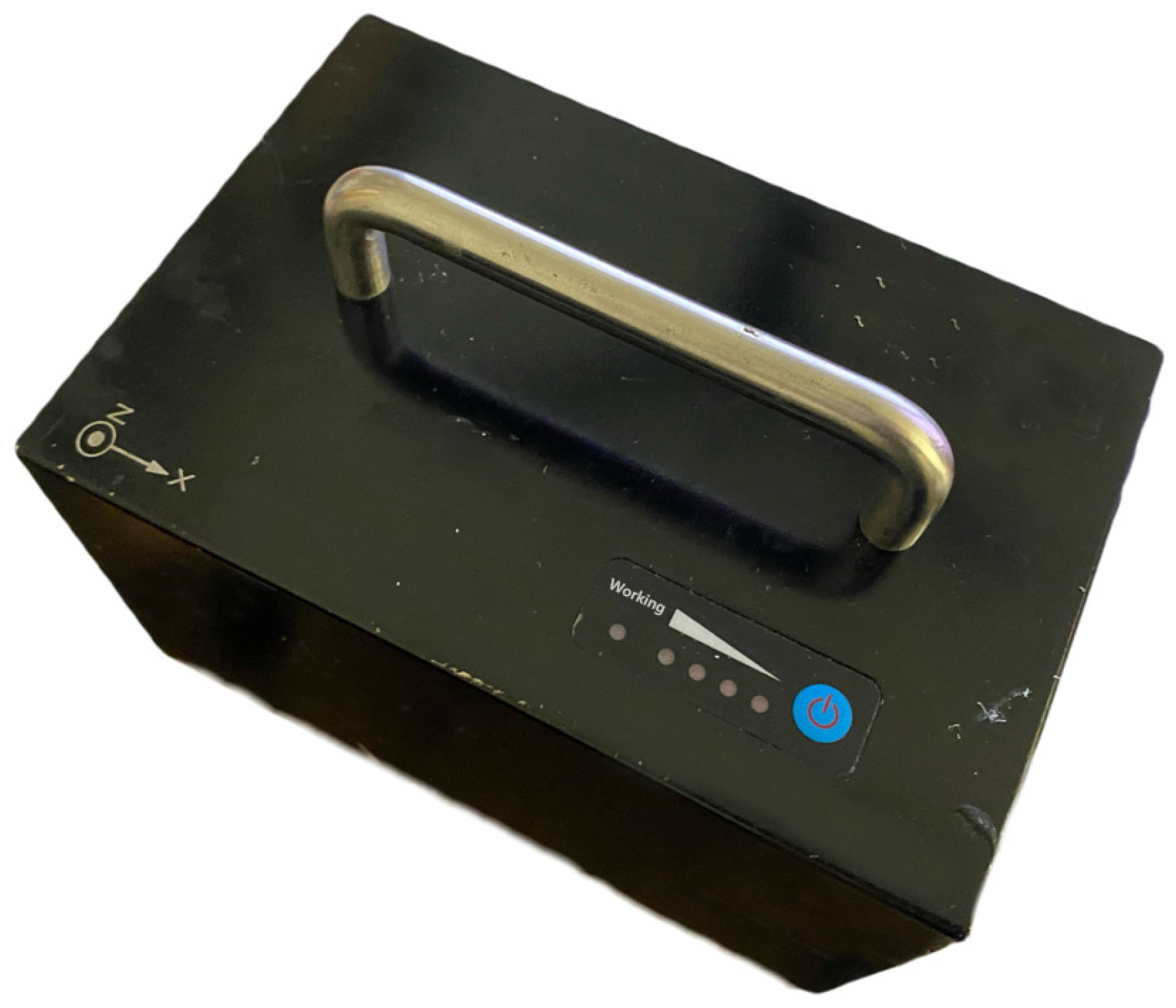
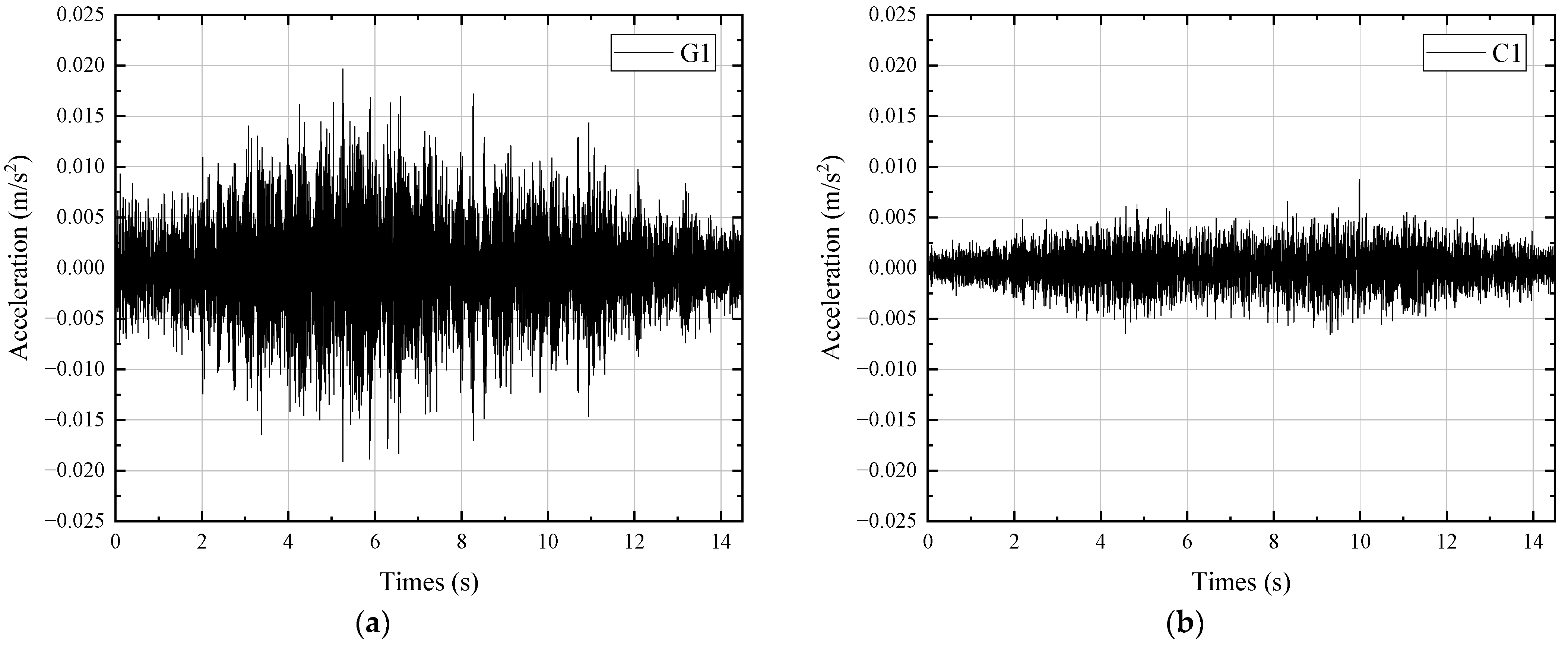

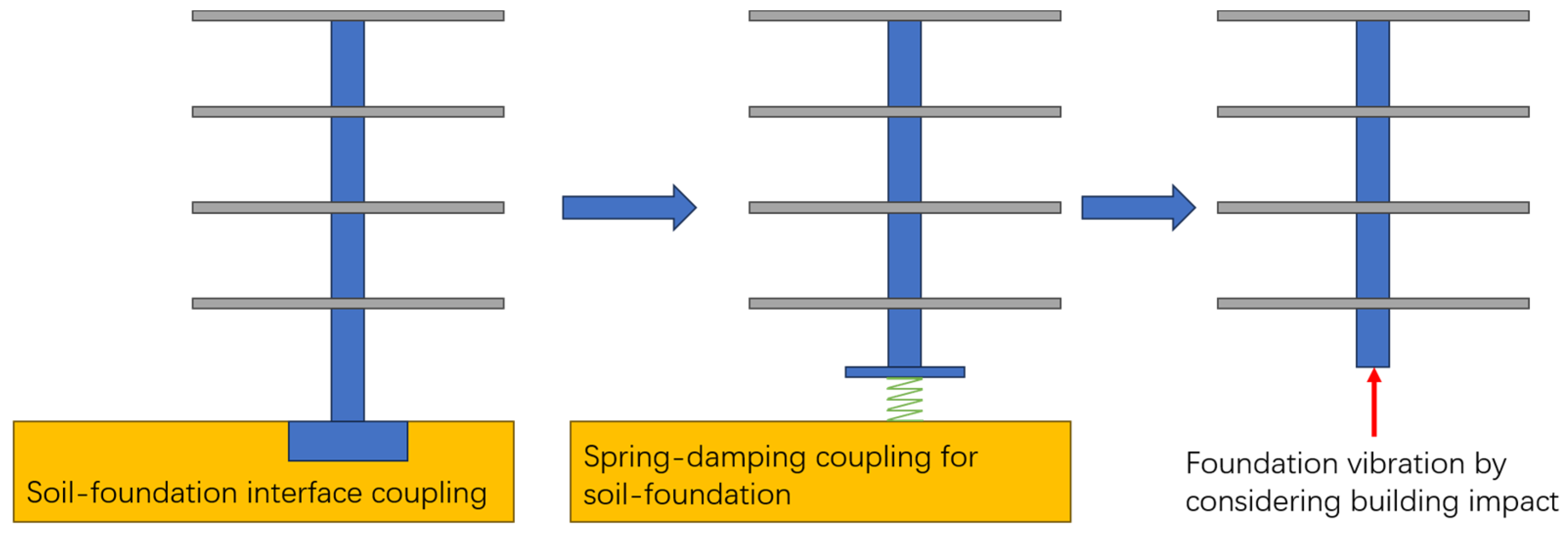
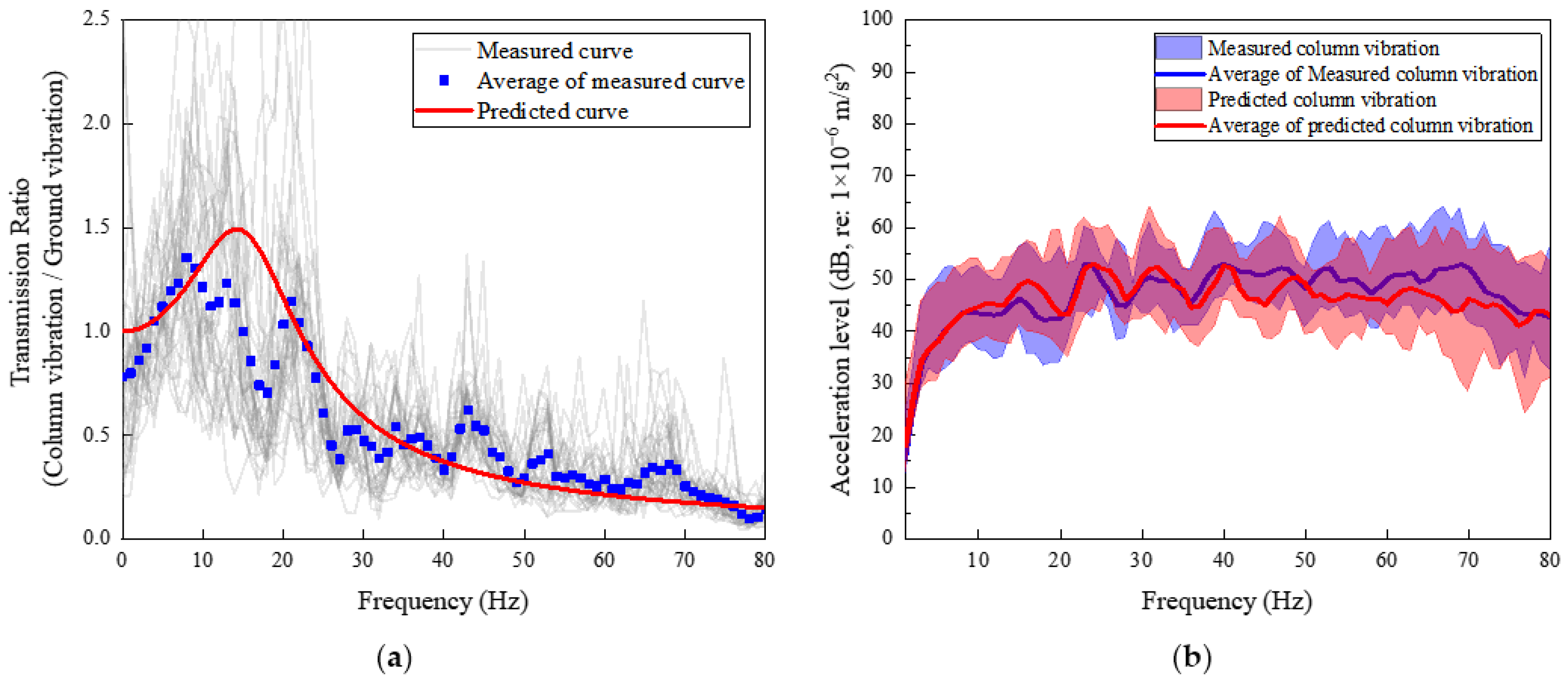
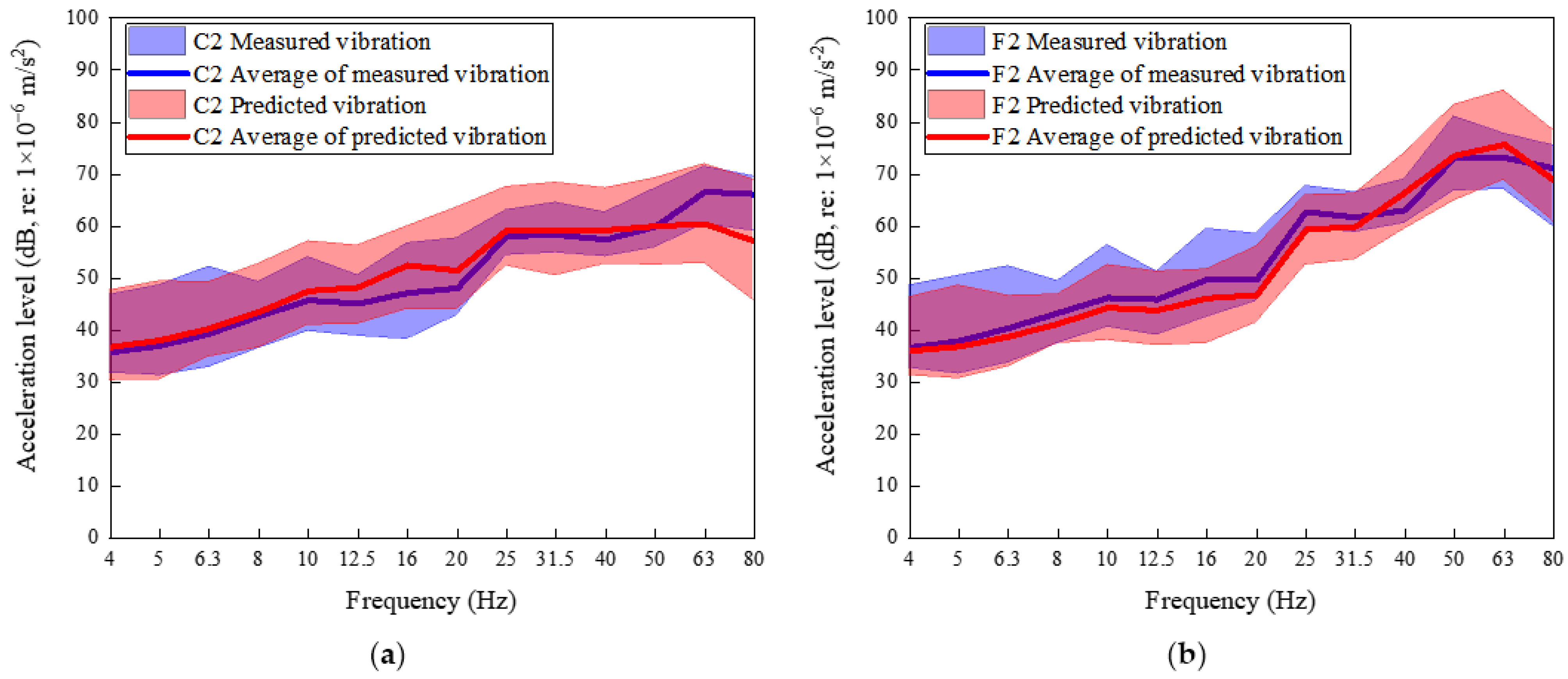
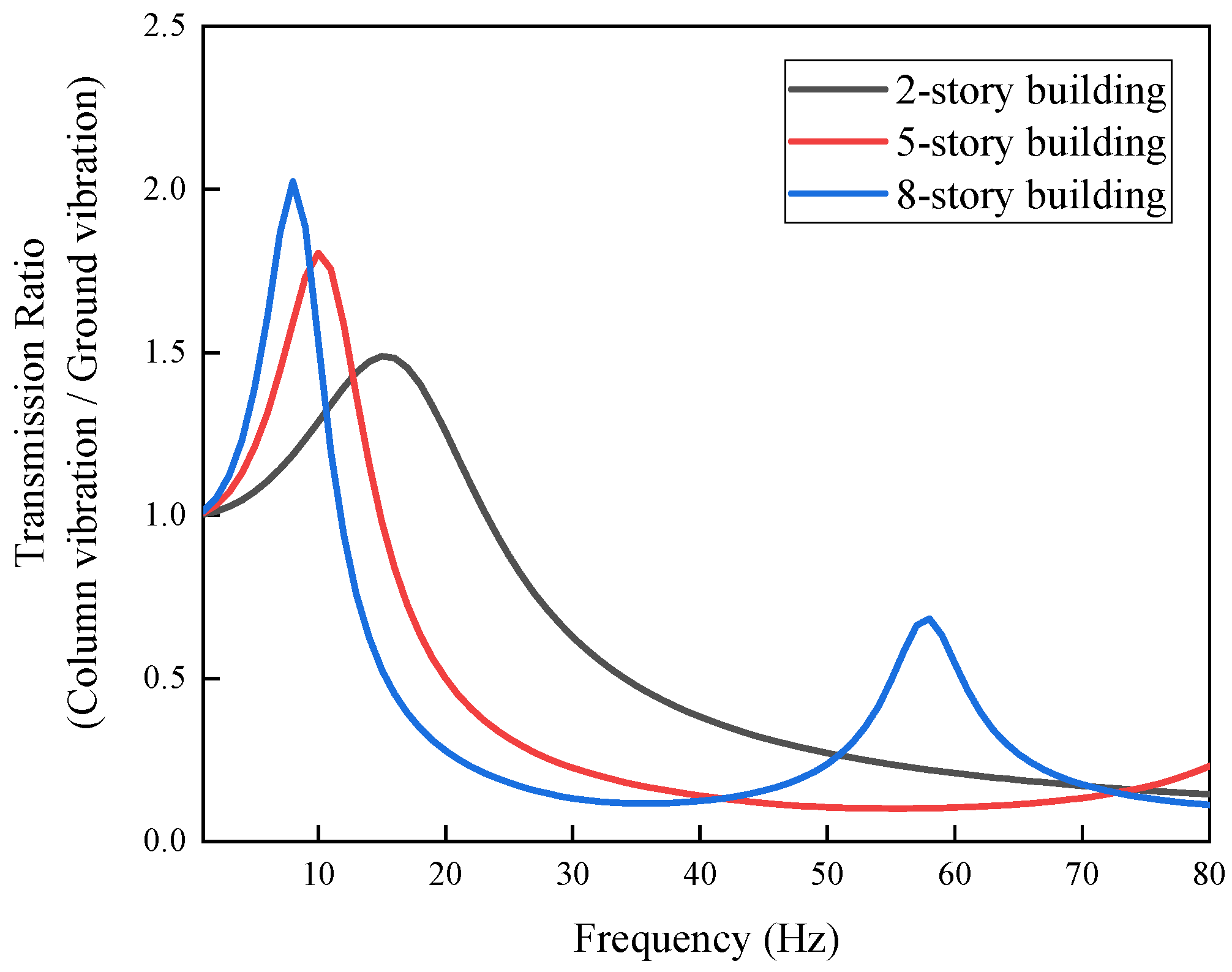

| Name | Thickness (m) | Density (kg/m3) | Poisson’s Ratio | Modulus of Elasticity (MPa) |
|---|---|---|---|---|
| Plain fill | 2.1 | 16 | 0.45 | 120 |
| Clay | 1.3 | 18.4 | 0.46 | 130 |
| Muck | 8.4 | 17.5 | 0.48 | 300 |
| Silty clay | 10.6 | 19.3 | 0.45 | 380 |
| Structural Component | h (m) | t (m) | w (m) | E (Gpa) | ρ (kg/m3) |
|---|---|---|---|---|---|
| Column | 4 | 0.4 | 0.4 | 32.5 | 2500 |
| Floor slab | - | 0.1 | - | 30 | 2500 |
| Rigid foundation | - | 1.2 | 1.2 | 32.5 | 2500 |
Disclaimer/Publisher’s Note: The statements, opinions and data contained in all publications are solely those of the individual author(s) and contributor(s) and not of MDPI and/or the editor(s). MDPI and/or the editor(s) disclaim responsibility for any injury to people or property resulting from any ideas, methods, instructions or products referred to in the content. |
© 2024 by the authors. Licensee MDPI, Basel, Switzerland. This article is an open access article distributed under the terms and conditions of the Creative Commons Attribution (CC BY) license (https://creativecommons.org/licenses/by/4.0/).
Share and Cite
He, L.; Tao, Z. Building Vibration Measurement and Prediction during Train Operations. Buildings 2024, 14, 142. https://doi.org/10.3390/buildings14010142
He L, Tao Z. Building Vibration Measurement and Prediction during Train Operations. Buildings. 2024; 14(1):142. https://doi.org/10.3390/buildings14010142
Chicago/Turabian StyleHe, Lingshan, and Ziyu Tao. 2024. "Building Vibration Measurement and Prediction during Train Operations" Buildings 14, no. 1: 142. https://doi.org/10.3390/buildings14010142
APA StyleHe, L., & Tao, Z. (2024). Building Vibration Measurement and Prediction during Train Operations. Buildings, 14(1), 142. https://doi.org/10.3390/buildings14010142







